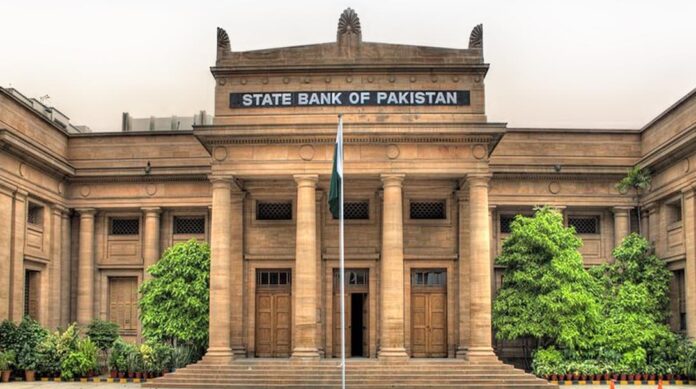The State Bank of Pakistan (SBP) has projected that the ongoing economic recovery and flood-related supply disruptions may widen imports and temporarily push inflation above the upper bound of the medium-term target range in FY26.
In its Annual Report on the State of Pakistan’s Economy for FY2024–25, the central bank stated that flood-induced shortages of perishable food items and the phasing out of favourable base effects could lift food and energy inflation in the second half of FY26. However, restrained domestic demand and stable global commodity prices are expected to keep underlying inflation contained, guiding it back within the 5–7% target range by FY27.
The SBP said moderate economic expansion and flood-related shortages may raise import demand, while slowing global growth and agricultural losses will likely keep exports subdued. It added that strong growth in workers’ remittances is expected to limit the current account deficit to between 0% and 1% of GDP in FY26.
According to the report, prudent monetary policy, fiscal consolidation, favourable global commodity prices, and support under the IMF’s Extended Fund Facility helped strengthen macroeconomic stability in FY25. Real GDP grew modestly, driven by services and industrial recovery, despite declines in key crops and large-scale manufacturing.
Imports increased alongside higher activity, but a strong rise in remittances offset the trade deficit, producing a notable current account surplus. The surplus, combined with external inflows from multilateral and bilateral partners, helped stabilise the foreign exchange market and boost SBP reserves.
The report noted that fiscal consolidation and higher SBP profits reduced the fiscal deficit to a nine-year low in FY25, with the primary balance exceeding targets for a second consecutive year. Inflation dropped sharply from 23.4% in FY24 to an eight-year low of 4.5% in FY25, supported by a stable exchange rate, lower commodity prices, and steady food supplies.
In response, the Monetary Policy Committee reduced the policy rate by a cumulative 1,100 basis points between June 2024 and June 2025. The report also identified structural constraints — including low savings, large fiscal imbalances, high dependency ratios, and an extensive informal economy — as key challenges limiting Pakistan’s growth potential.
A special chapter on “The Challenge of Low Savings in Pakistan” attributed weak savings to low per capita income, high inflation, fiscal deficits, and behavioural factors. The report said these issues, combined with political uncertainty, regulatory hurdles, and frequent climate events, continue to affect investment and growth prospects.
The SBP said stable macroeconomic conditions, improved fiscal discipline, and ongoing IMF reforms have strengthened business and consumer confidence. It noted that international credit rating agencies upgraded Pakistan’s ratings between April and August 2025.
However, the report warned that flood-related damages to crops and infrastructure could affect agriculture and disrupt supply chains, with GDP growth expected near the lower end of the 3.25–4.25% range in FY26.




